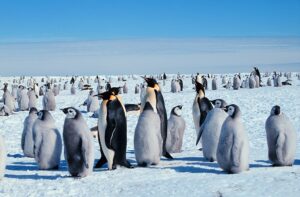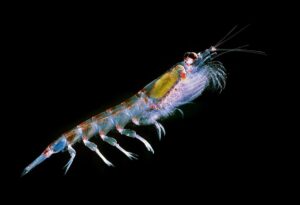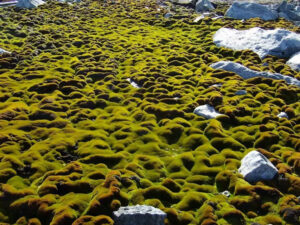Can Life Survive in Antarctica?

– Shivaan Darda

At first glance, Antarctica seems like a scene out of the film Frozen, lonely and lifeless. With temperatures dropping as low as –80°C and winds that can reach over 320 kilometres per hour, it’s hard to imagine anything thriving there. But nature is full of surprises—this continent is home to some of the toughest, most resilient organisms on Earth.
Penguins
The most famous residents of Antarctica are penguins, especially the Emperor penguin. These flightless birds have adapted to the extreme cold by huddling together for warmth, reducing heat loss by up to 50%. Their dense feathers, a layer of insulating fat, and a slow metabolism help them survive in temperatures that would freeze most other animals.

Seals, Whales, and Krill
The surrounding Southern Ocean is rich with life. The Weddell and leopard seals have thick blubber to stay warm and can hold their breath for over 30 minutes while diving under the ice to hunt. Antarctic krill, tiny shrimp-like creatures, are the foundation of the food web—forming swarms so vast they can cover an area larger than the United Kingdom!
Microbial Marvels
Even in the ice itself, life persists. Scientists have discovered bacteria and fungi living in briny pockets of water within glaciers, some of which can survive temperatures as low as –20°C. These microbes have antifreeze proteins and other adaptations that prevent their cells from freezing solid.

Plants and Algae
While trees and grasses can’t grow here, mosses, lichens, and algae thrive during the short summer when sunlight returns for up to 24 hours a day. Algae can even bloom under the ice, providing food for tiny invertebrates and helping fuel the Antarctic ecosystem.
Why It Matters
Studying life in Antarctica helps scientists understand how organisms adapt to extreme environments—and could even provide clues for life on other planets, like Mars or icy moons.